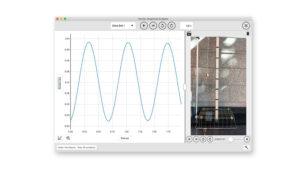Have your students ever wondered why artificial turf fields feel hotter than natural grass on a sunny day? In this video, Vernier Earth science expert Nüsret Hisim demonstrates a hands-on workshop exploring how to use Vernier sensors to investigate the relationship between the reflectivity of various colors and temperature changes due to energy absorption. By incorporating this activity into your Earth or environmental science curriculum, you’ll help your students better understand climate and energy balance, as well as the relevance of this phenomenon in their everyday lives, from choosing what color shirt to wear on a sunny day to understanding the wider impact of melting ice caps.
What you’ll learn
- How to use the Go Direct® Light and Color Sensor and Go Direct Surface Temperature Sensor with confidence to create engaging, hands-on learning experiences for your students
- Strategies for integrating this experiment into your Earth or environmental science curriculum, highlighting its relevance to real-world phenomena and current environmental issues
- Ideas for using real-world examples, such as the color choices for cars and houses in warm climates, to make the content more relatable and meaningful for your students



